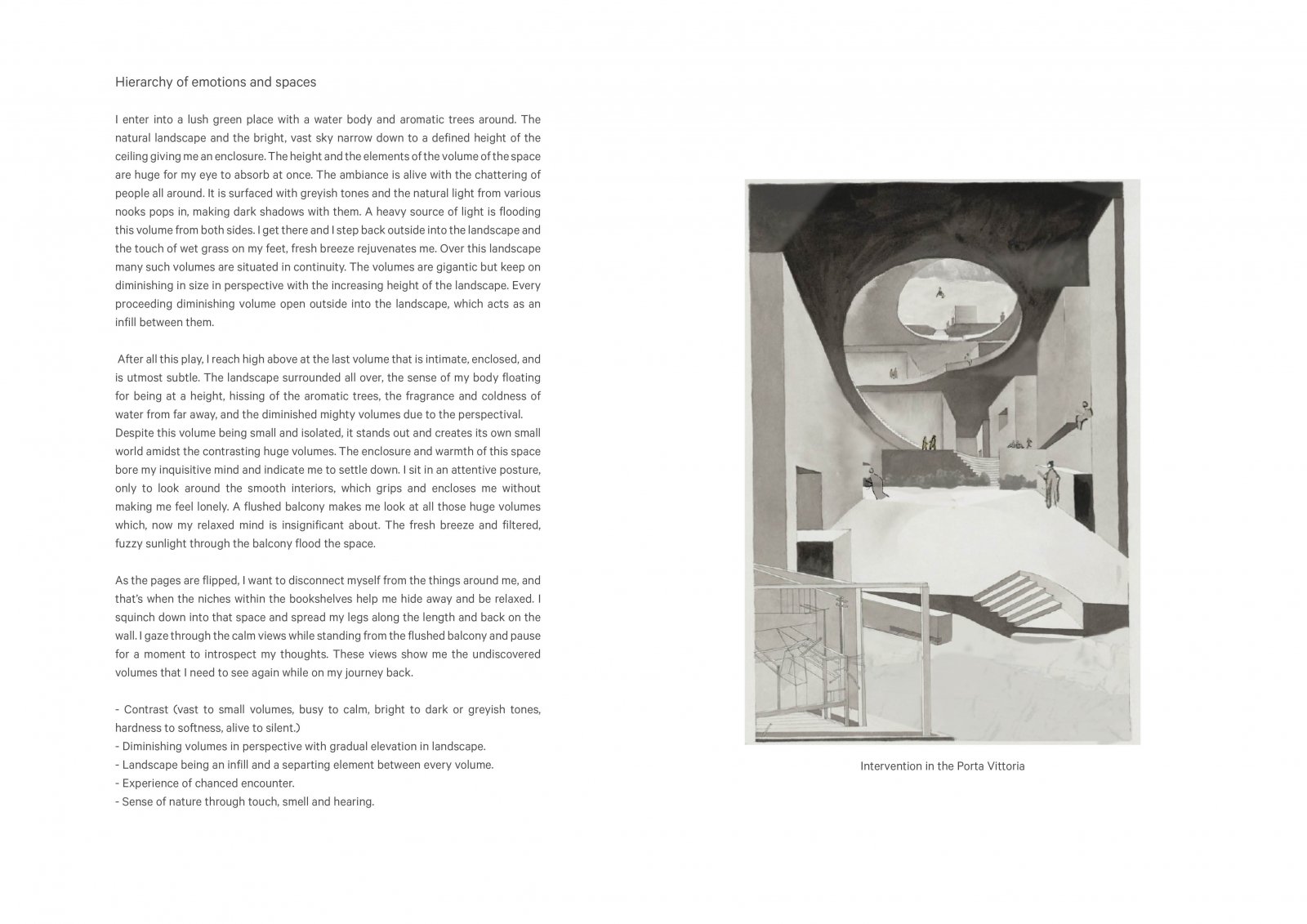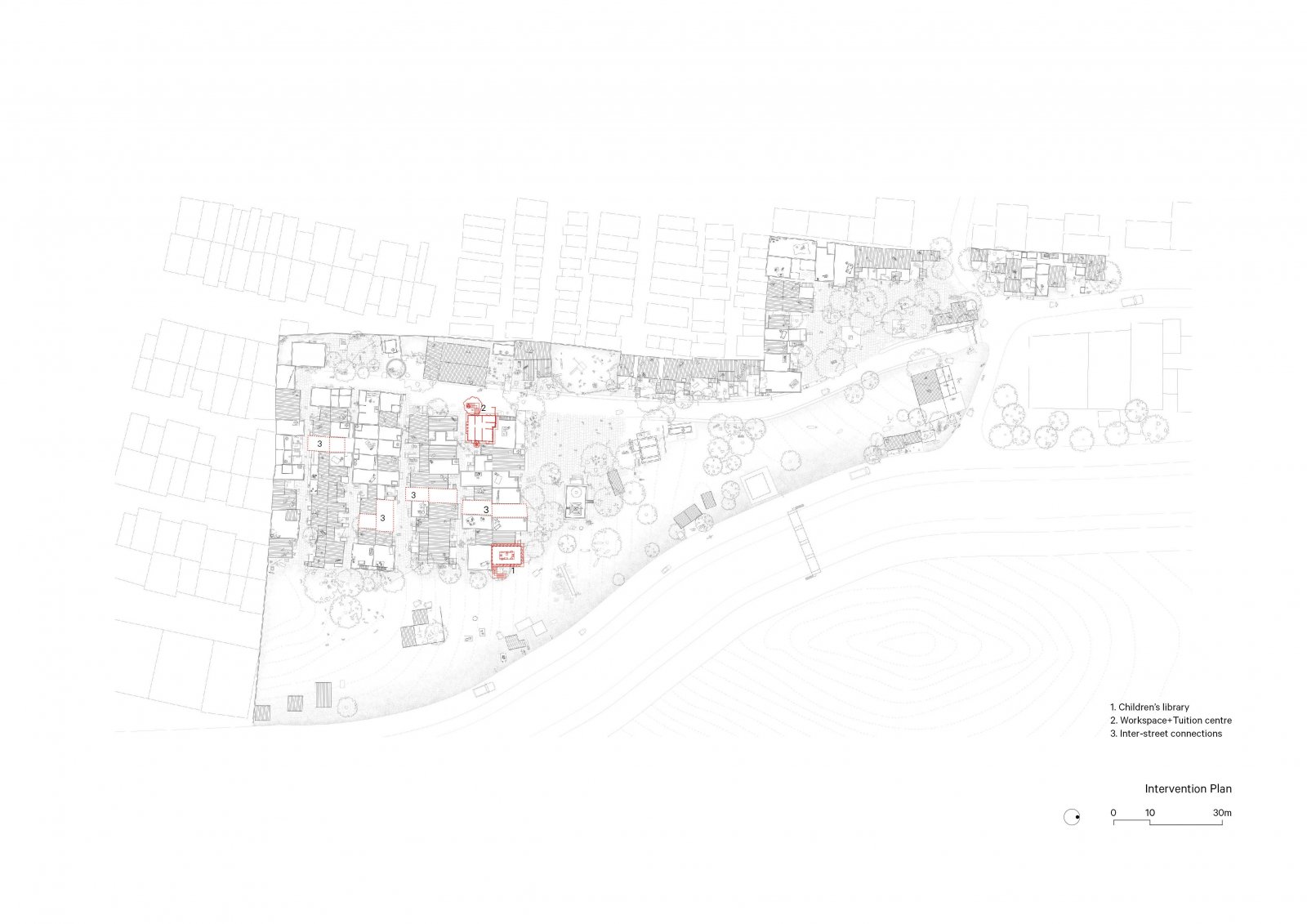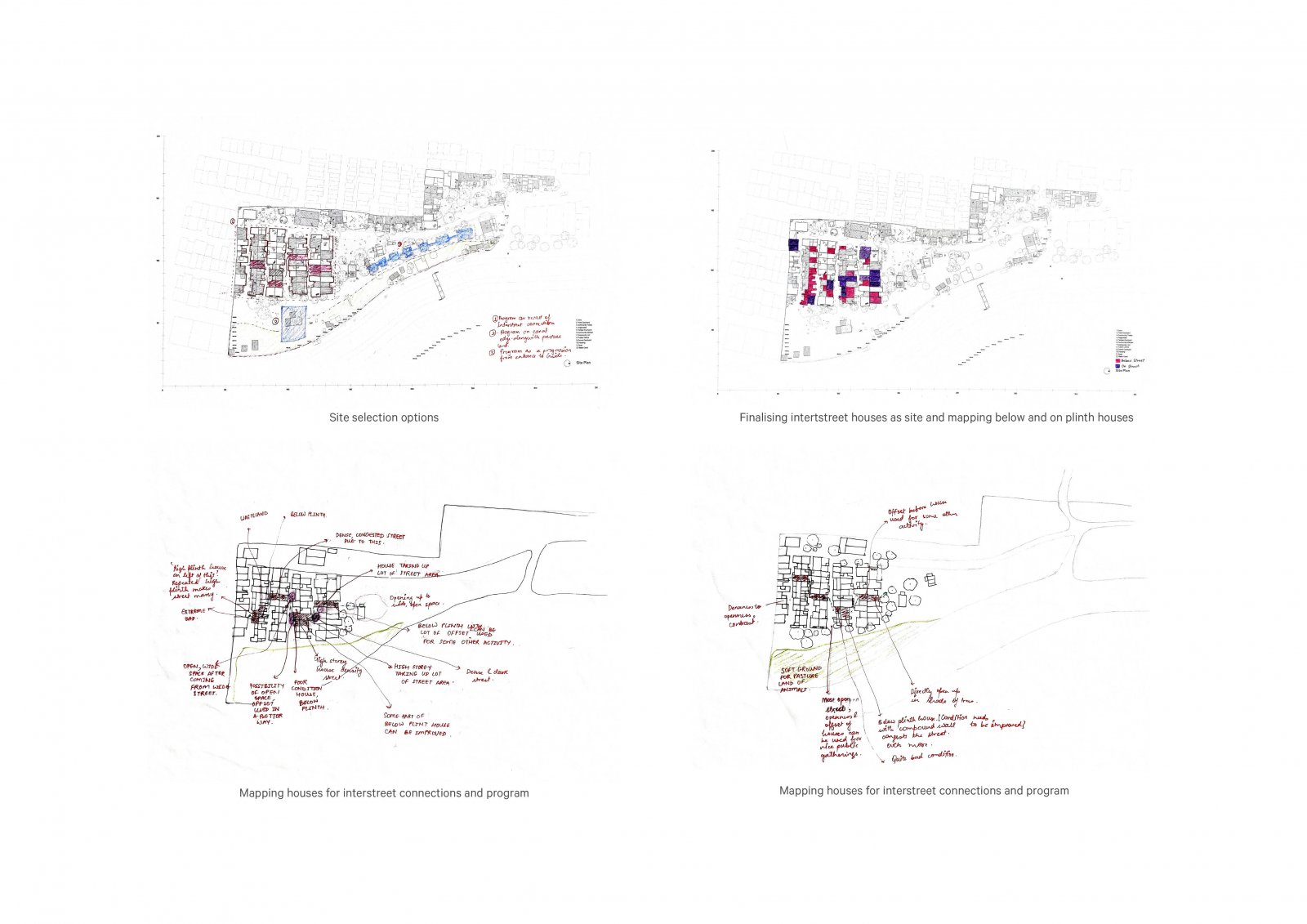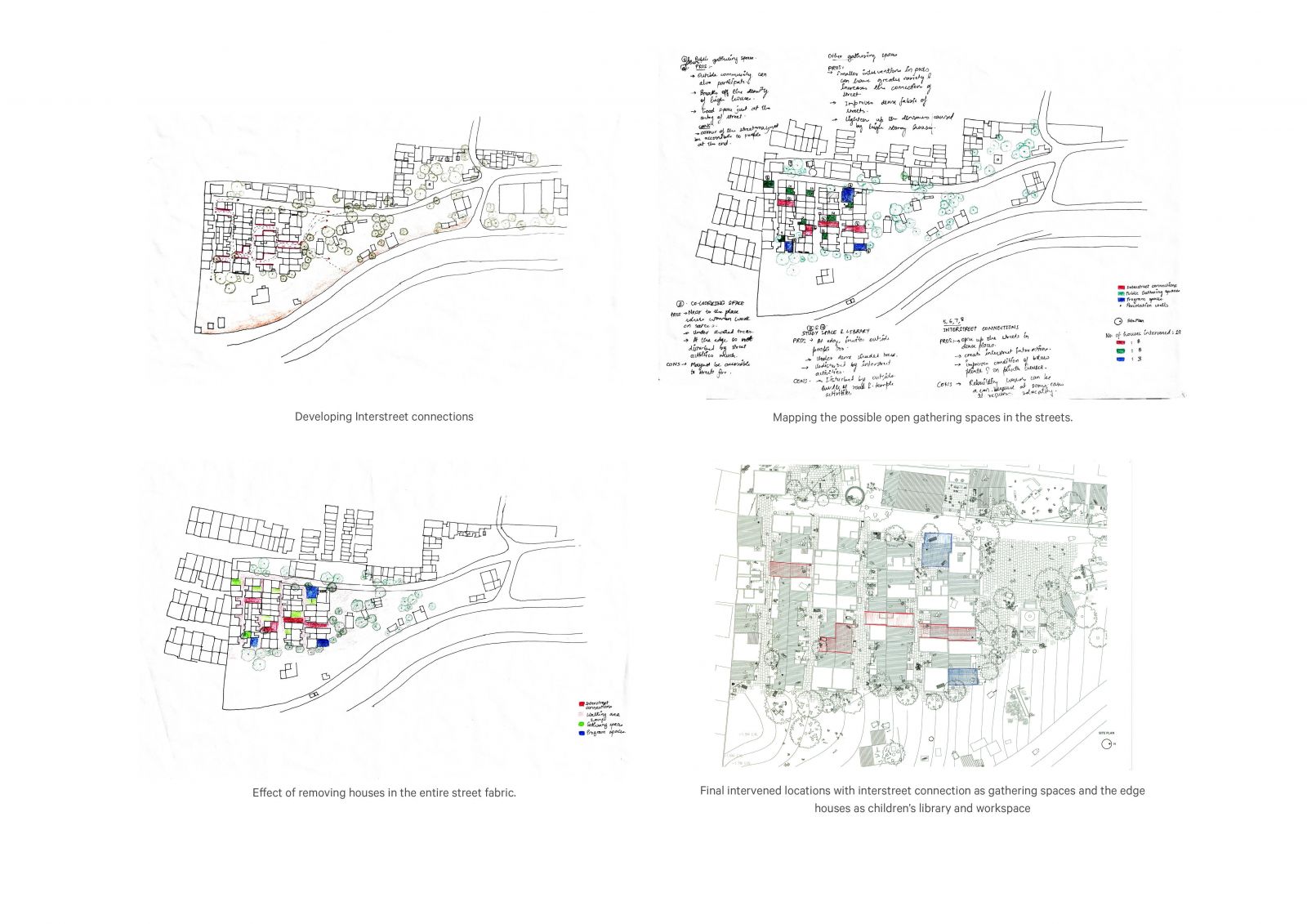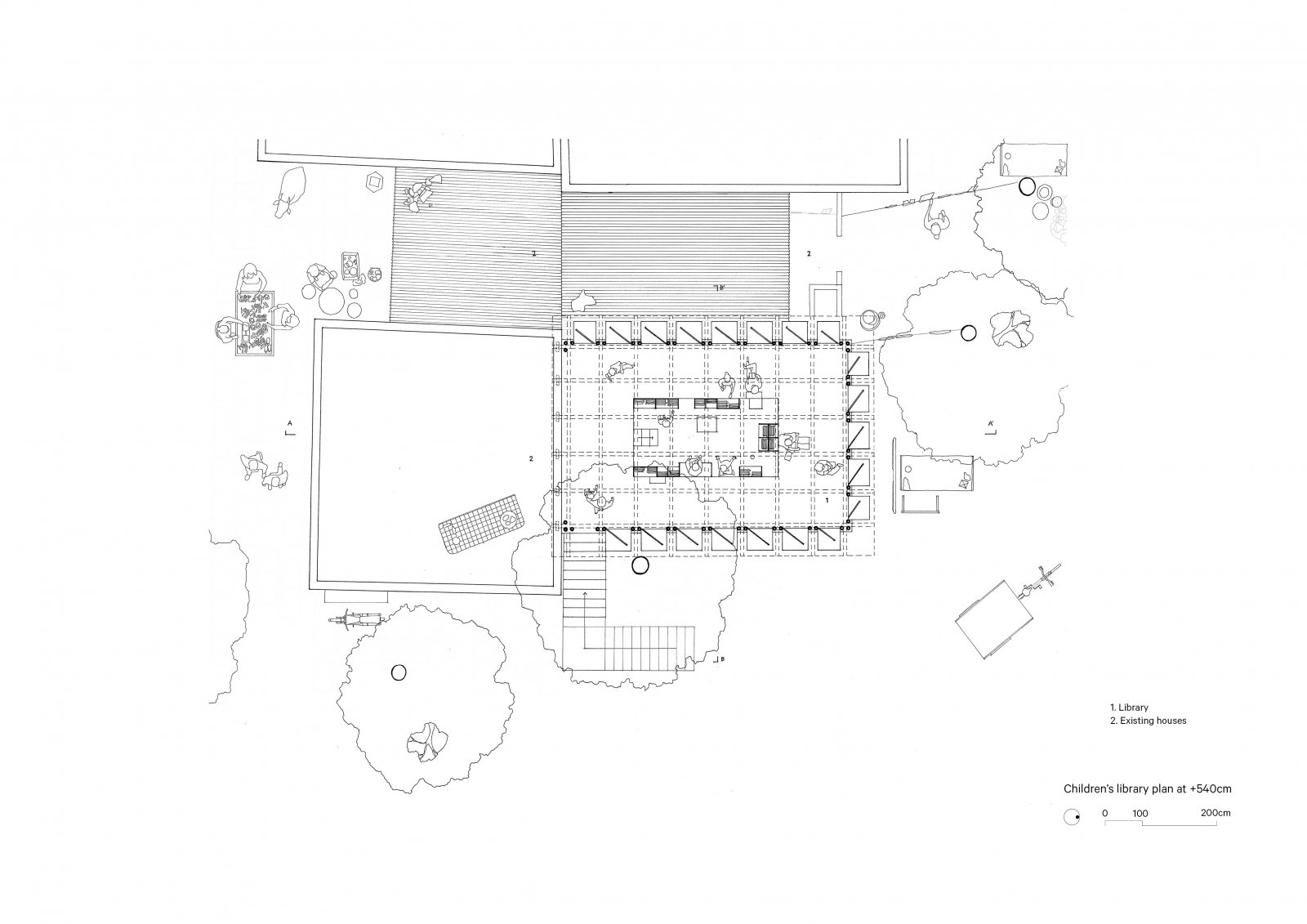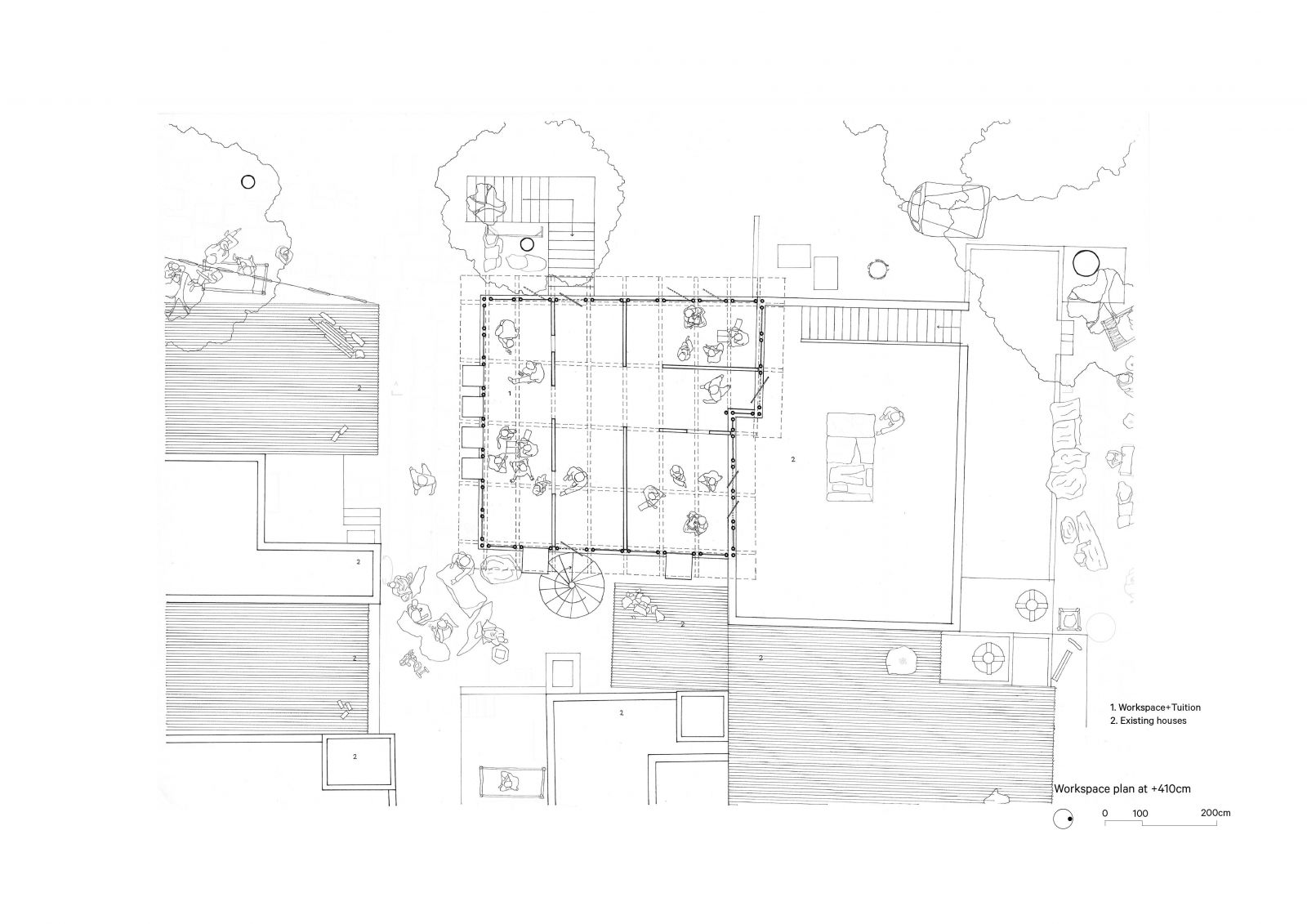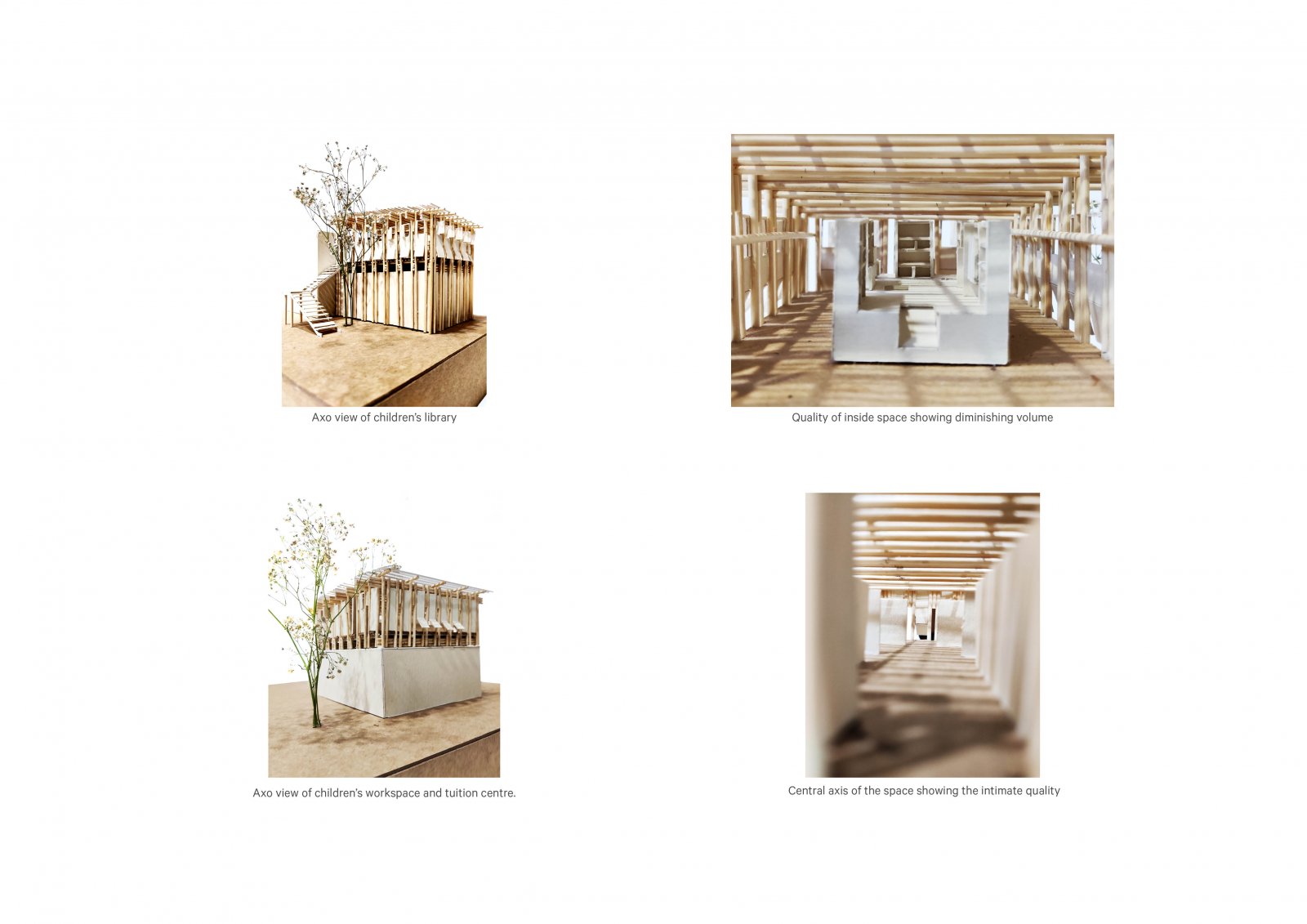Your browser is out-of-date!
For a richer surfing experience on our website, please update your browser. Update my browser now!
For a richer surfing experience on our website, please update your browser. Update my browser now!
The project intervenes in between the street fabric of the Loving community to reduce their denseness. This creates an inter-street relationship where people can gather and meet at several places within the street. This is done to provide buffer spaces within the street apart from the large open spaces in the community.
In order to achieve this, on-plinth and below-plinth houses are mapped strategically and they are shifted to the first floor which in turn creates a free ground cover to just pass through, work together and meet as a community.
The project also intends to intervene at two edge houses of the street to create a children’s library and a workspace for them. The intervention of the children’s library uses the terrace of an existing below plinth house. It aims to provide a porous space to read and look outside at the free edge of the canal along with improving the condition of the house below.
The use of bamboo in the building material not only provides porosity to the reading space but also invites people from outside the community because of its distinctive presence amidst the houses.
The workspace for children has an intimate, private quality and is built on top of the existing plinth house. The use of bamboo screens between the columns is climate-responsive and opens out to multiple accesses outside.
